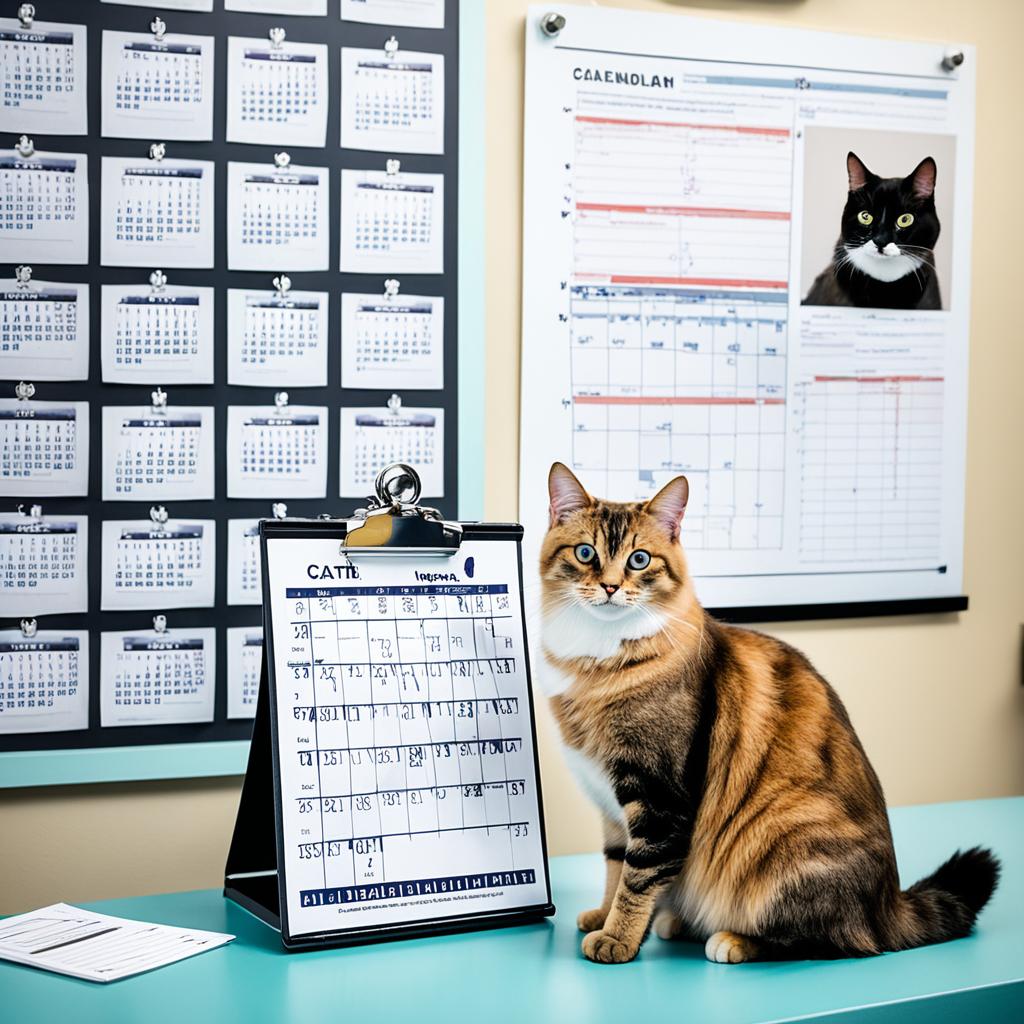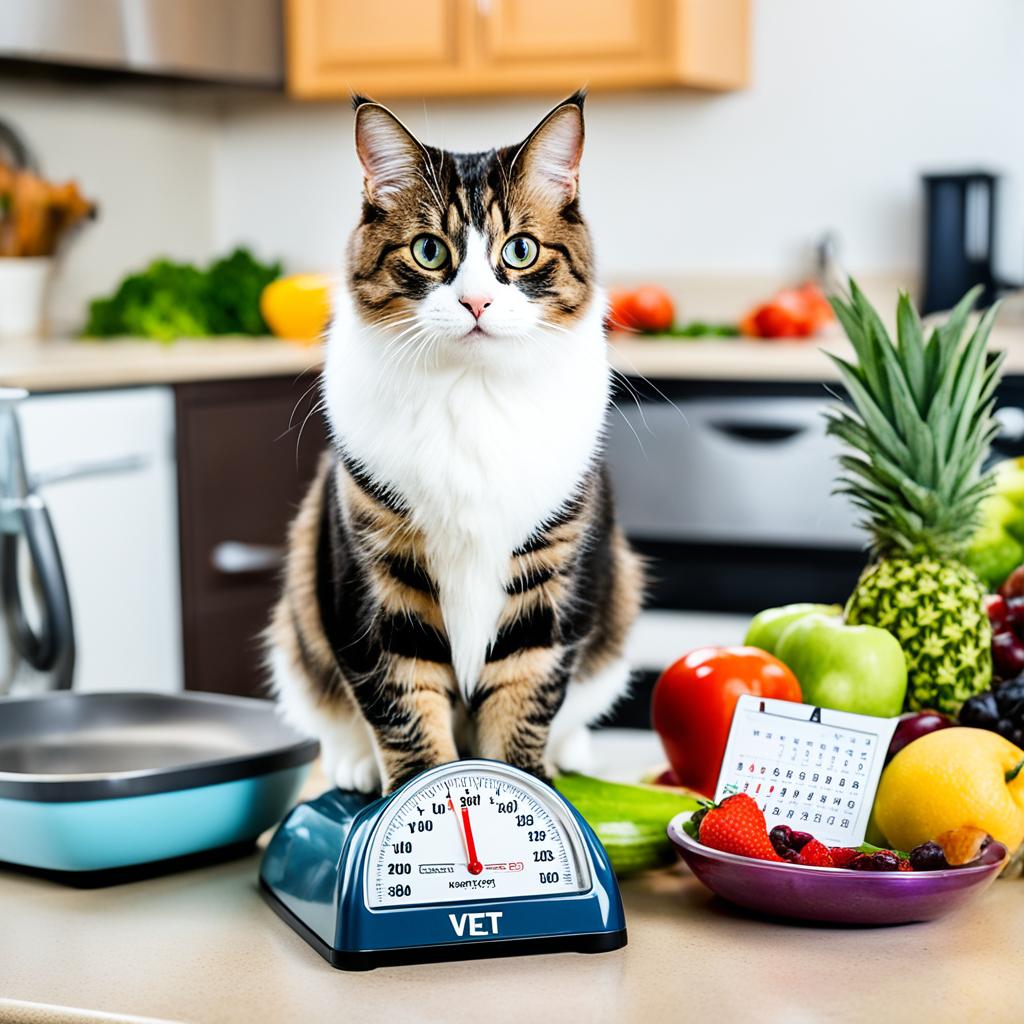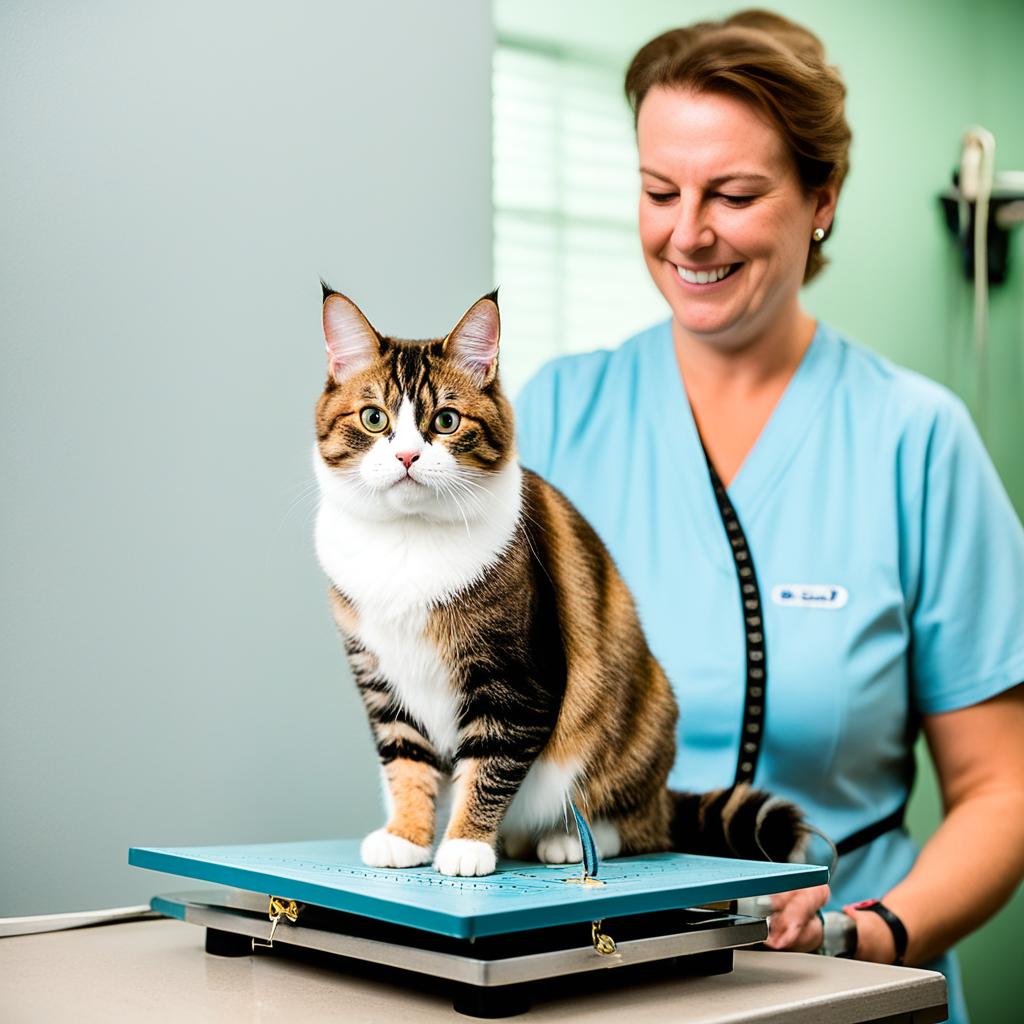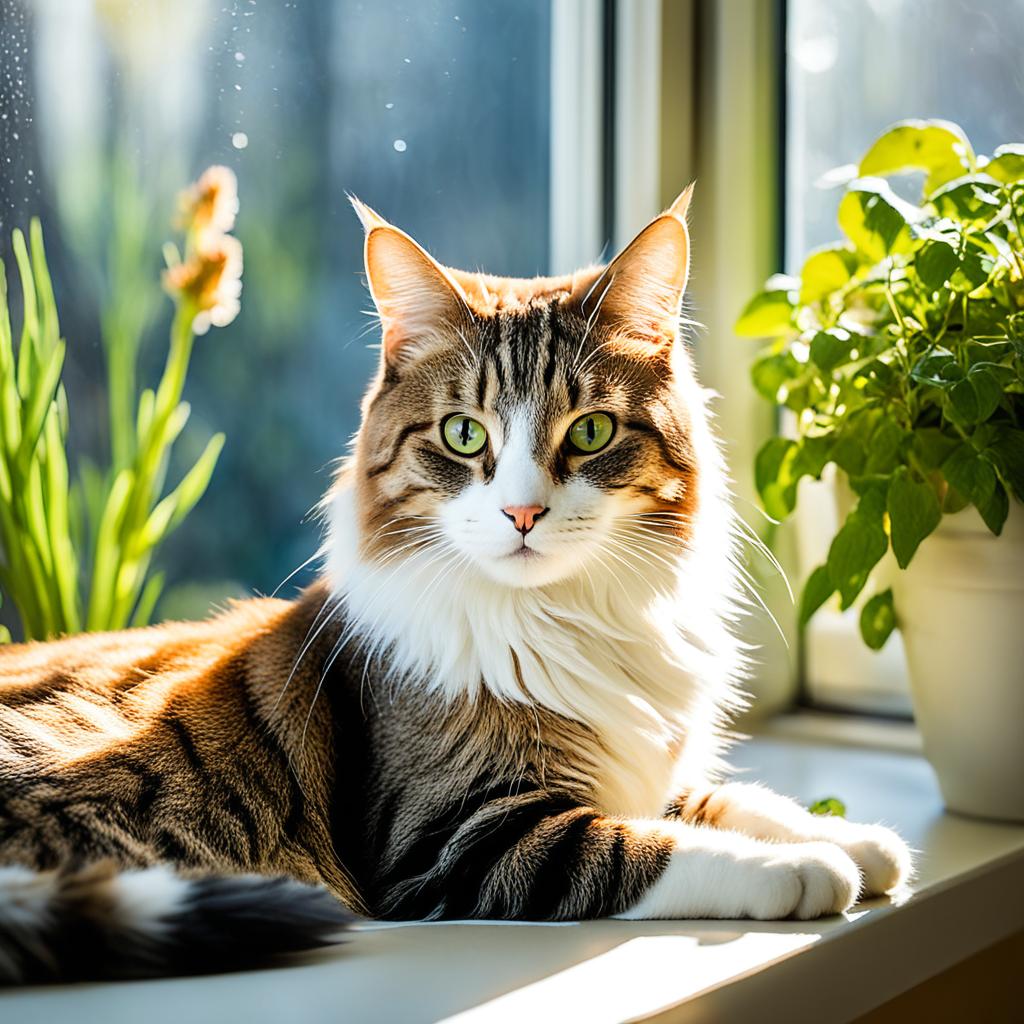Ever wondered how to ensure your Manx cat stays in tip-top shape without making constant trips to the vet? Cats are more than just playful balls of fur; their health is critical, and as a devoted pet owner, you owe it to your feline friend to maintain their well-being. Home monitoring for Manx cat health is a proactive step that every responsible cat parent can take. By keeping a watchful eye on their diet, hydration levels, and daily behavior, you can stay ahead of potential health issues. So, let’s dive into how to monitor a Manx cat’s health at home and keep your furry companion thriving in their tailless glory.
Key Takeaways
- A Manx cat’s health can be effectively monitored at home with vigilance.
- Diet, hydration, and behavior are critical indicators of your cat’s well-being.
- Early detection of issues enhances your Manx cat’s quality of life.
- Consistent home health evaluations can reduce the need for frequent vet visits.
- Your attention to your Manx cat’s routine can make all the difference.
Introduction to Manx Cat Health

Ensuring the health of your Manx cat begins with a keen sense of observation and a proactive approach. These magnificent felines, renowned for their distinctive tailless appearance, require particular attention when it comes to health monitoring. Recognizing and understanding their unique needs can make all the difference in fostering a thriving and happy cat.
One of the most essential aspects of keeping track of a Manx cat’s health is being aware of their common health tendencies. Whether it’s spinal issues due to their genetic makeup or vigilance against potential urinary problems, being informed allows you to act swiftly. Creating an environment that promotes well-being and involves regular health checks can significantly enhance their quality of life.
It’s also beneficial to integrate some vital Manx cat health monitoring tips into your daily routine. This could include monitoring their diet, hydration levels, and behavioral patterns. Subtle changes can be the first indications of health issues, and catching these early can prevent more significant problems down the line. Your attentiveness not only contributes to your cat’s longevity but also strengthens the bond you share.
Here’s a comprehensive breakdown of what to focus on when it comes to keeping track of a Manx cat’s health:
| Health Factor | Description | Tips |
|---|---|---|
| Diet | Balanced high-protein nutrition | Avoid human food; ensure consistent feeding schedules |
| Hydration | Plenty of fresh water daily | Regularly clean water bowls; consider water fountains to encourage drinking |
| Behavior | Activity levels and social interaction | Note changes in playfulness or sudden lethargy; engage in regular play |
| Physical Checks | Regular grooming and examination | Observe coat quality, skin issues; check for lumps or unusual behavior |
By adopting these Manx cat health monitoring tips, you’ll be well prepared to provide the attention and care your beloved pet deserves. Your dedication will not only help in keeping track of a Manx cat’s health but also ensure a happy, purring companion for years to come.
Daily Observation Techniques

Regular observations of your Manx cat’s daily habits play a crucial role in maintaining their health. A consistent home health assessment for Manx cats ensures you catch any changes promptly, making all the difference in early detection.
Check Eating and Drinking Habits
Pay attention to your Manx cat’s eating and drinking patterns. Any sudden decrease or increase in appetite or water intake could be an indication of health issues. Keeping an eye on these habits can be a vital part of your DIY health checks for Manx cats.
Monitor Activity Levels
Your cat’s energy and activity levels reveal a lot about their well-being. Bursts of playfulness are typical, but sudden lethargy shouldn’t be ignored. Ensuring consistent vigilance through home health assessment for Manx cats can help identify underlying problems before they escalate.
Observe Litter Box Use
Litter box habits offer significant insights into your cat’s internal health. Regularity in elimination and the appearance of waste are critical indicators. Changes such as frequent urination or difficulty defecating are red flags. Including this in your routine DIY health checks for Manx cats can be particularly effective in early detection of potential health issues.
| Health Indicator | Normal Behavior | Concerning Signs |
|---|---|---|
| Eating & Drinking | Consistent intake | Sudden increase/decrease |
| Activity Levels | Regular playfulness | Lethargy |
| Litter Box Use | Normal elimination | Irregularities in waste |
How to Monitor a Manx Cat’s Health at Home?

Keeping a close eye on your Manx cat’s health isn’t just a task—it’s an excuse to spend more quality time with your feline companion. Knowing how to monitor a Manx cat’s health at home starts with a keen observation. Begin by noting their physical condition, mood changes, and any peculiar behaviors.
Monitoring a Manx cat’s well-being at home involves regular checks of a few key areas:
- Physical Condition: Regularly examine your Manx’s weight, coat condition, and skin. A glossy coat and healthy skin are signs of good health, while sudden weight loss or gain could signal underlying issues.
- Grooming Habits: Observe how often your cat grooms itself. Over-grooming or lack of grooming can indicate stress or potential health issues.
- Behavioral Changes: Keep track of your cat’s activity levels and social interactions. Reduced activity or increased seclusion can be red flags.
Detailed tracking can be made easier by maintaining a health checklist:
| Health Aspect | What to Observe | Frequency |
|---|---|---|
| Physical Condition | Weight, coat gloss, skin health | Weekly |
| Grooming Habits | Frequency of grooming, grooming consistency | Daily |
| Behavior | Activity levels, social interaction | Daily |
By being observant and diligent, you can make monitoring a Manx cat’s well-being at home an easy and enjoyable routine. This proactive approach ensures any potential health concerns are spotted early, allowing you to take prompt action and ensure your Manx cat lives its best tailless life.
Grooming and Hygiene

Grooming and hygiene play an essential role in ensuring optimal Manx cat health care at home. Establishing a consistent routine and paying attention to three main practices can make a world of difference for your feline friend’s well-being.
Regular Brushing
Regular brushing is imperative for your Manx cat to remove loose hair and minimize hairballs. This practice helps maintain their coat and can be a bonding activity for both of you. Using a quality brush, a few minutes every other day can significantly improve their overall hygiene and appearance.
Ear Cleaning
Regular ear cleaning is crucial to prevent mites and infections. Use a damp cloth or a vet-recommended ear cleaner to gently wipe the inner ear. This practice helps in early detection of any abnormalities, ensuring swift action and better Manx cat health care at home.
Nail Trimming
Overgrown claws can lead to injuries and damaged furniture. Regular nail trimming keeps your Manx cat comfortable and your home scratch-free. Invest in a pair of cat-specific nail clippers and get into a routine to minimize stress for your cat during grooming sessions.
Incorporating these grooming and hygiene practices into your routine is crucial for effective Manx cat health care at home. Regular brushing, ear cleaning, and nail trimming not only promote health but also help you detect any health issues early, ensuring your Manx cat remains in peak condition.
Diet and Nutrition

Ensuring a balanced diet for your Manx cat is essential for their overall health and well-being. A diet rich in protein and essential nutrients supports their specific health needs, making it crucial to focus on quality cat food designed to meet feline dietary requirements. Avoid the temptation to substitute cat food with human food, as it could lead to nutritional imbalances and other health issues.
Providing fresh water at all times is another vital aspect of maintaining proper diet and nutrition. Hydration plays a key role in various bodily functions, and monitoring your Manx cat’s water intake can offer valuable insights into their health status.
Monitoring your Manx cat’s food intake is a practical part of Manx cat health monitoring tips. A sudden change in appetite or eating habits could be an indicator of potential health concerns, prompting a closer look or a visit to the veterinarian. Consistency in their diet not only maintains their nutritional balance but also positively impacts their vitality and longevity.
“A well-fed Manx cat is a happy, healthy companion.”—Veterinary Nutrition Expert
To help you better understand the dietary needs of your Manx cat, here’s a comparative table:
| Nutrient | Importance | Sources |
|---|---|---|
| Protein | Essential for growth and muscle maintenance | Poultry, fish, meat-based cat foods |
| Fat | Provides energy and supports cell function | Fish oil, chicken fat |
| Vitamins | Supports immune system and overall health | Animal liver, fish oil, cat food supplements |
| Minerals | Important for bone health and metabolic functions | Meat, bone meal, cat food additives |
By following these Manx cat health monitoring tips in your approach to diet and nutrition, you can help ensure your furry friend’s health and happiness for many years to come.
Common Health Issues in Manx Cats

Manx cats, renowned for their unique appearance, are often vulnerable to specific health problems due to their genetic makeup. Awareness and knowledge of these common health issues can significantly enhance your ability to care for your feline friend.
Spinal Issues
One of the primary concerns among common health issues in Manx cats is their propensity for spinal issues. Their iconic taillessness, stemming from a genetic mutation, sometimes results in shorter spines. This can compromise nerve function, leading to a variety of mobility and health problems. Regular vet visits and monitoring their movement can help mitigate the challenges posed by these spinal issues.
Arthritis
Arthritis in cats, particularly in Manx breeds, can present a significant concern as they age. This condition often correlates with their spinal issues, making them prone to joint pain and stiffness. Observing signs of discomfort and maintaining a dialogue with your vet can help manage arthritis symptoms effectively.
Digestive Problems
Digestive problems are another prevalent health issue in Manx cats. These may include gastrointestinal disturbances like constipation and diarrhea. Monitoring your cat’s diet and ensuring they stay hydrated are crucial steps in managing these digestive problems. A balanced diet and regular vet check-ups go a long way in keeping their digestive health in check.
DIY Health Checks for Manx Cats

Regular DIY health checks for Manx cats can truly revolutionize your cat’s health routine. Start by examining their body for lumps or irregularities. This hands-on assessment is an excellent way to catch any underlying issues before they escalate. Next, pay attention to their eyes; clarity and brightness are signs of good health. If you notice any cloudiness or discharge, it might be time for a vet visit.
Don’t forget about their coat. A healthy coat should be smooth and free of bald patches. Checking your Manx cat’s coat regularly will help you identify any skin problems or pests early on. Gently palpating their abdomen can also alert you to any discomfort or anomalies. Getting familiar with your cat’s normal breathing patterns is another vital aspect of a thorough home health assessment for Manx cats.
Engaging in such hands-on checks not only keeps your Manx cat in peak condition but also enhances your understanding of its health quirks and nuances. Whether it’s finding a lump or noticing a change in their breathing, these DIY health checks allow you to act promptly, keeping your Manx purr-fect and happy.
The Importance of Regular Vet Visits

While monitoring a Manx cat’s well-being at home is crucial, regular vet visits are paramount in maintaining your furry friend’s health. By incorporating routine check-ups, vaccinations, and dental care into your cat’s health regimen, you ensure a well-rounded approach to their welfare.
Vaccinations
Vaccines for cats protect them from various infectious diseases that could otherwise be fatal. Regular vet visits allow your veterinarian to administer necessary vaccines and keep track of your cat’s immunization schedule. Ensuring your Manx cat is fully vaccinated keeps them safe and healthy.
Routine Check-Ups
Routine check-ups are essential for early detection of health issues. During these visits, the vet will perform a thorough examination, which includes listening to the heart and lungs, checking the eyes, ears, and mouth, and palpating the abdomen. Picking up on potential problems early on can prevent more serious conditions down the road.
Dental Care
Dental care for cats is often overlooked but is vital in preventing oral issues such as tooth decay and gum disease. Regular vet visits incorporate professional dental cleanings, which help maintain your Manx cat’s overall health. Poor dental health can lead to bacteria entering the bloodstream and affecting other organs, so it’s imperative to keep those pearly whites clean.
Below is a snapshot of the key services during regular vet visits:
| Service | Details |
|---|---|
| Vaccinations | Protects against communicable diseases |
| Routine Check-Ups | Early detection of health issues |
| Dental Care | Prevents tooth decay and gum disease |
By combining monitoring a Manx cat’s well-being at home with regular vet visits, you create a comprehensive health plan ensuring a long, happy life for your beloved feline.
Environmental Enrichment and Play

Creating a dynamic and stimulating environment can significantly impact your Manx cat’s physical and mental health. Cats, by nature, are curious creatures who thrive on exploration and discovery. Ensuring your home is set up to satisfy these natural instincts can prevent boredom and promote overall well-being.
Consider incorporating a variety of elements for environmental enrichment for cats. This can include simple additions like scratching posts, which cater to their intrinsic need to scratch and stretch. You can also integrate climbing trees and shelves to allow vertical movement, which gives them a vantage point and a sense of security.
Interactive toys play a crucial role in keeping your feline engaged and active. These toys simulate hunting and pouncing behaviors, keeping their minds sharp and bodies agile. Scheduling regular play and training sessions not only helps to strengthen your bond but also aids in reducing stress and anxiety in your cat.
Another brilliant addition to your home could be puzzle feeders. These tools make your Manx work a bit for their food, engaging their brain and providing physical activity. It’s an effortless way to blend feeding with play and training with cats, making mealtimes fun and enriching.
- Scratching posts: Essential for maintaining their claws and providing a spot for them to flex their paws.
- Climbing trees and shelves: Useful for vertical exploration, adding dimension to their living space.
- Interactive toys: Keeps their hunter instincts sharp and provides both physical and mental stimulation.
- Puzzle feeders: Combining feeding with play, ensuring that every meal is an opportunity for enrichment.
Regular interaction, varied play environments, and thoughtful enrichment tools contribute to a well-balanced, happy Manx cat. Implementing these simple yet effective strategies will transform your home into a feline paradise, ensuring that your Manx cat enjoys a fulfilling, enriched life.
Conclusion
Ensuring the health of your Manx cat at home involves a multi-faceted approach that demands vigilant monitoring and proactive caregiving. From daily wellness checks to a consistent grooming routine, every action contributes to Manx cat health care at home. Start with simple observations of their eating, drinking, and litter box habits, and be mindful of any alterations in behavior or activity levels.
Maintaining a balanced diet is key. Your Manx cat, with its unique genetic background, may have specific nutritional needs. A steady intake of high-quality food and fresh water not only fuels their body but also acts as a barometer for their well-being. Consistency here can prevent many health issues before they start.
Beyond diet, a thorough understanding of common health problems like spinal issues, arthritis, and digestive troubles empowers you to act swiftly at the first sign of trouble. Regular DIY health checks, such as examining their coat, eyes, and overall body condition, are instrumental in keeping your Manx cat in peak shape. Remember, home monitoring for Manx cat health is not complete without regular vet visits and an enriching environment filled with play and mental stimulation.
Embrace these practices with dedication, and you’re set to enjoy a long, joyful companionship with your Manx. Holistic Manx cat health care at home enriches not only their life but also fosters a deeper bond between you and your cherished feline friend.




